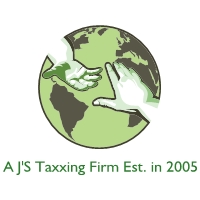After severe thunderstorms and tornadoes raked parts of Tennessee on March 31, many of Volunteer State taxpayers could use a little good news. The Internal Revenue Service is doing its part, announcing tax relief for storm victims.
The agency announced that taxpayers and businesses in the 10 hardest-hit counties have been given until July 31, 2023, to meet a number of filing and payment deadlines, including the following:
- April 18: income tax return filing and payment deadline
- April 18: quarterly estimated tax payment deadline
- April 30: quarterly payroll and excise tax return deadline
- June 15: quarterly estimated tax payment deadline
Further, the IRS says penalties on payroll or excise tax deposits due March 31 – April 18 will be abated as long as tax deposits are made by April 18.
Information on other returns qualifying for relief, payments delayed, and other details can be found on the Disaster Assistance and Emergency Relief for Individuals and Businesses page on the IRS website.
Which Tennessee counties are receiving this tax relief?
The expanded deadlines are available to taxpayers and businesses in the 10 Tennessee counties named in the federal disaster declaration:
- Cannon
- Hardeman
- Hardin
- Haywood
- Lewis
- Macon
- McNairy
- Rutherford
- Tipton
- Wayne
If any other counties are added to the disaster declaration, the IRS will automatically add them to the list of qualifying counties.
There is one caveat for those who want more time beyond the expanded July 31 deadline: extension requests from disaster-area taxpayers after April 18 and before July 31 can only be filed on paper. (See the “Extension of Time To File Your Tax Return” page on IRS.gov for more details.)
Do taxpayers need to do anything to receive this tax relief?
Taxpayers within the disaster area do not have to do anything to receive the IRS relief measures; when they file, IRS electronic systems will apply relief measures according to the address on the return. However, any tax return that claims a loss within the disaster area due to these storms should contain the FEMA declaration number: 4701-DR.
According to the IRS, those living outside the disaster area may still be able to qualify for this tax relief if “records necessary to meet a deadline occurring during the postponement period are located in the affected area,” or they are “workers assisting the relief activities who are affiliated with a recognized government or philanthropic organization.” Unlike residents who automatically receive relief, these taxpayers need to call the IRS: 866-562-5227.
Source: IR-2023-75

